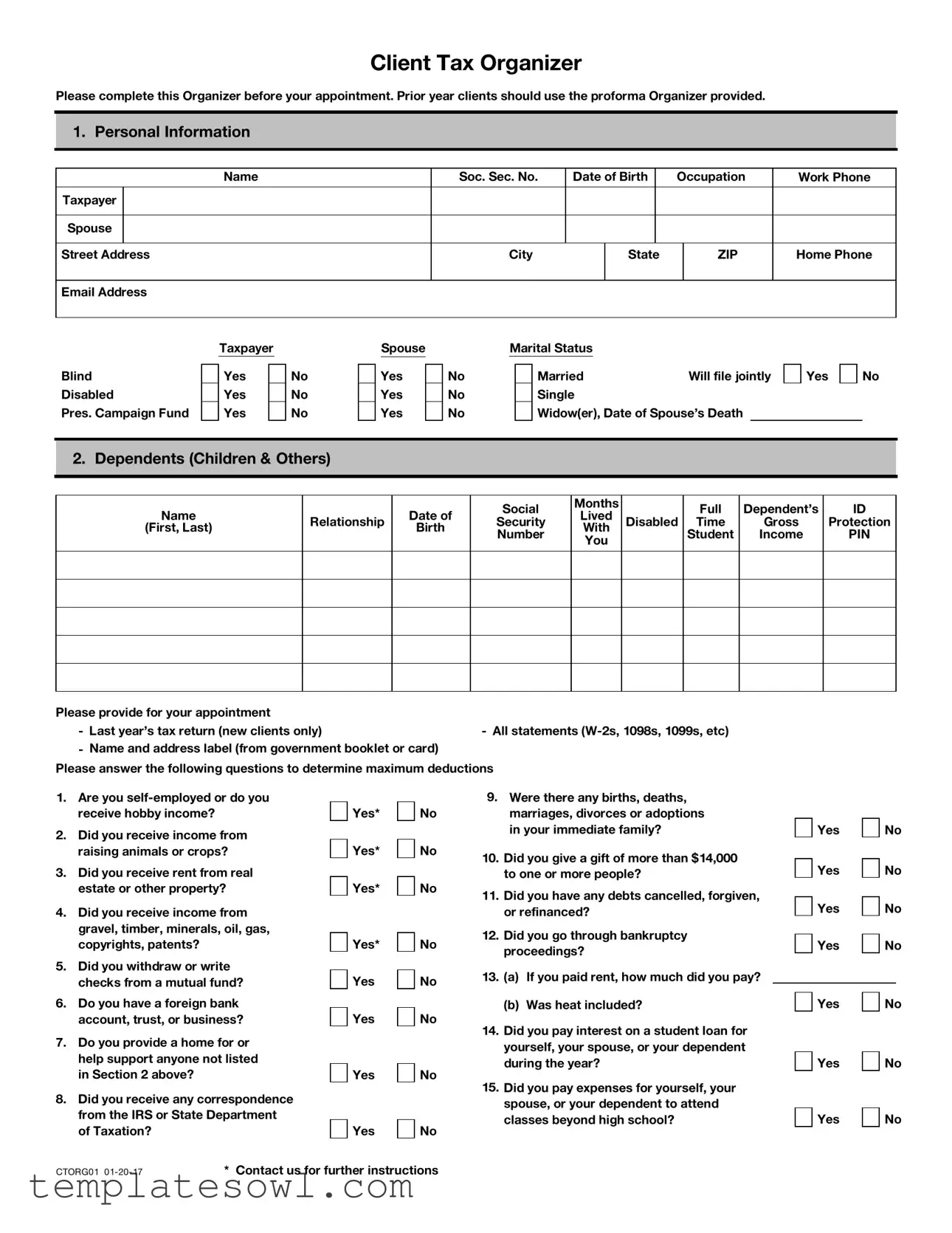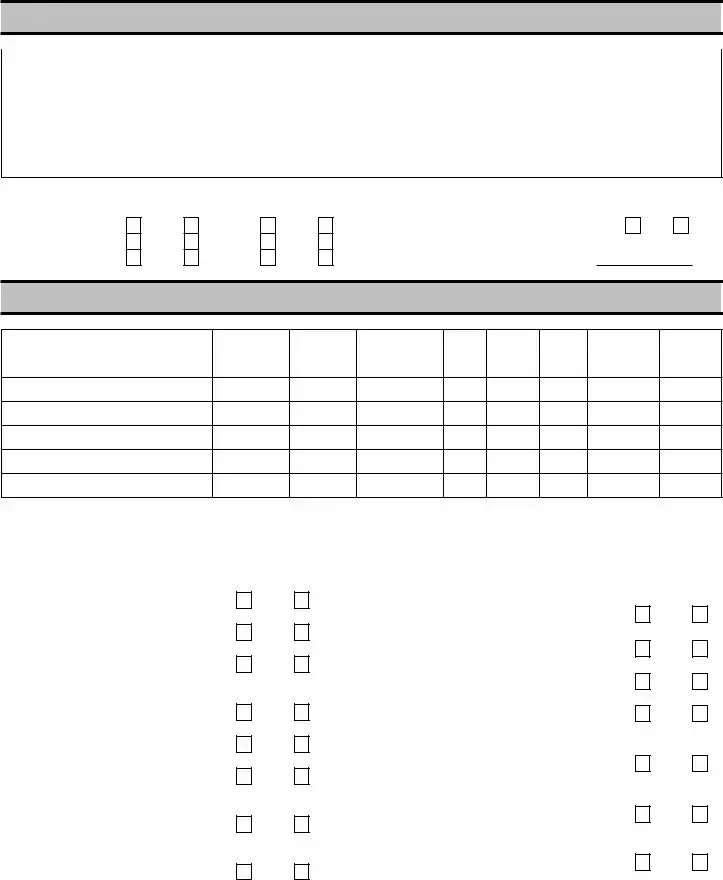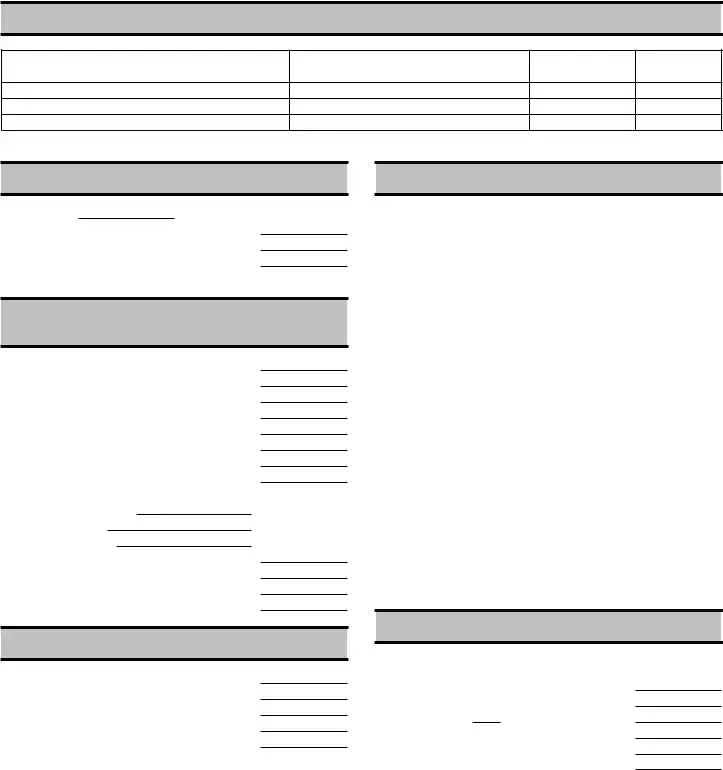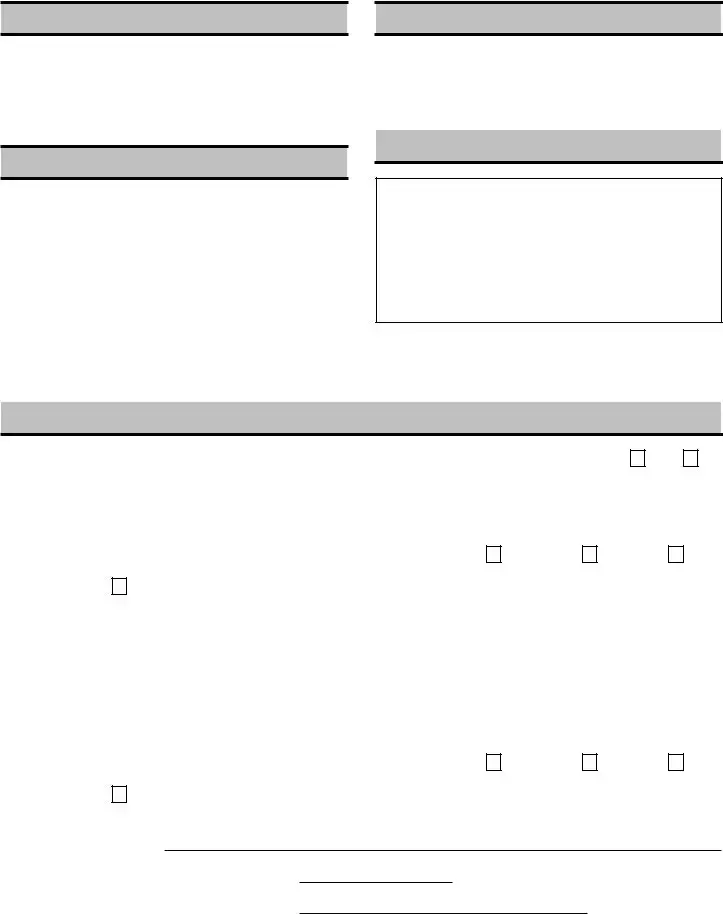What is the purpose of the Client Tax Organizer form?
The Client Tax Organizer form is designed to help taxpayers gather the necessary information needed for tax preparation. Completing this form before your appointment ensures that your tax preparer has all the relevant information to maximize your deductions and credits. It serves as a comprehensive checklist that covers personal information, income sources, deductions, and other essential details that will help in accurately filing your tax return.
Who needs to fill out the Client Tax Organizer?
All clients who are preparing for their tax appointment should complete the Client Tax Organizer. This includes both new clients and returning clients. Previous clients should use the proforma Organizer provided to ensure they include all relevant updates and changes from the past year.
What information is required in the Personal Information section?
In the Personal Information section, you will need to provide your name, Social Security number, date of birth, occupation, work phone number, and other contact details. If applicable, you should also include information about your spouse, such as their name and Social Security number. This information is vital for accurately reporting your taxes and verifying your identity with tax authorities.
What should I bring to the appointment along with the completed Organizer?
When you attend your appointment, please bring last year's tax return if you are a new client. Additionally, gather all income statements, such as W-2s, 1098s, and 1099s. Providing these documents will facilitate a more efficient tax preparation process and will ensure that your preparer has all necessary information at their disposal.
Why do I need to provide Social Security numbers for my dependents?
Social Security numbers for dependents are crucial for accurately claiming them on your tax return. This information is used by the IRS to verify the qualifications for deductions and credits related to dependents, such as the Child Tax Credit. Failing to provide this information could result in delays or issues with your tax filing.
What types of income are important to report in the Organizer?
The Organizer covers various types of income that should be reported, including wages, self-employment income, rental income, interest, dividends, and any other income sources. It is essential to fully disclose all forms of income to avoid potential issues or audits by tax authorities.
How do I know if I qualify for any deductions or credits?
The questions in the Organizer are designed to help identify potential deductions or credits you may qualify for. Areas include self-employment income, student loan interest payments, childcare expenses, and medical expenses. Reviewing these sections thoroughly before your appointment will help maximize your tax benefits.
What if I have recently experienced a major life change, like marriage or divorce?
Major life changes can significantly impact your tax situation. Be sure to indicate any changes, such as births, deaths, marriages, or divorces, in the Organizer. Your tax preparer will take these factors into consideration to ensure your tax return accurately reflects your current circumstances.
Do I need to report health insurance information in the Organizer?
Yes, it is essential to provide information regarding your healthcare coverage in the Organizer, including any Forms 1095-A, 1095-B, or 1095-C you may have received. Health insurance information can affect your eligibility for specific tax credits and penalties, making it an important element of your tax filing.
What should I do if I have lost my Social Security card?
If you have lost your Social Security card, you can still indicate your Social Security number on the Organizer. However, it is recommended that you apply for a replacement card to prevent complications with your tax filing and to keep your personal information secure. You may contact the Social Security Administration for guidance on obtaining a new card.






